Posts by John Dudovskiy
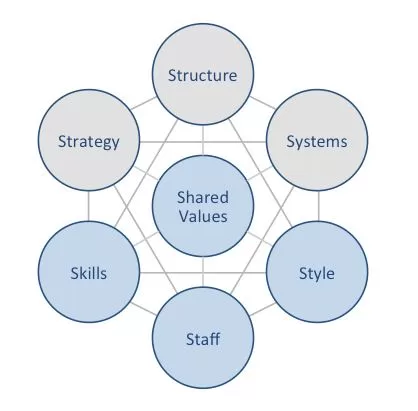
Nvidia McKinsey 7S model illustrates the ways in which seven elements of businesses can be aligned to increase effectiveness. According to the framework strategy, structure and systems represent hard elements, whereas shared values, skills, style and staff are soft elements. McKinsey 7S model stresses the presence of strong links between elements in a way that a change in one element causes changes in others. The model positions shared values are positioned at the core remaining elements, because shared values guide employee behaviour with implications on their performance. McKinsey 7S model Hard Elements in Nvidia McKinsey 7S Model Strategy. Nvidia business strategy benefits from first mover advantage systematically. This has been the case with GPU, Computer Unified Device Architecture (CUDA) and invented deep learning hardware accelerators, such as the Tesla V100 and T4 GPUs and a range of other products. However the sustainability of this strategy in the long-term perspective requires the regular pipeline of new products through effective investment in research and development. Structure. As one of the largest multinational technology companies in the world Nvidia organizational structure integrates the elements of functional and hybrid structures. Within the company business processes are divided into various divisions with highly specialised employees with the relevant skills and competencies attached into respective divisions. Furthermore, the senior management forms temporary project groups to develop new products or for other initiatives and group members report to multiple superiors for the duration of project. Systems. Nvidia depends on a wide range of systems for the business to operate smoothly. These include, but not limited to employee recruitment and selection, team development and orientation, transaction processing, customer relationship management, business intelligence and knowledge management. Each system has its KPIs and controls in place and they are monitored systematically. Nvidia Corporation Report contains a full analysis of Nvidia…
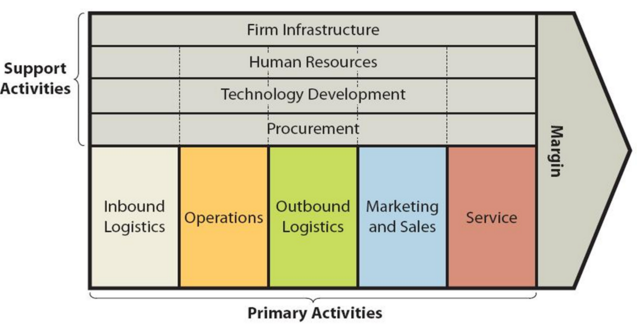
Nvidia value chain analysis is an analytical framework that assists in identifying business activities that can create value and competitive advantage to the business. Specifically, business leaders can create competitive advantage through dividing the business into various activities and analysing each activity individually from value creation perspective. Figure below illustrates the essence of Nvidia value chain analysis. Value chain analysis Primary Activities in Nvidia Value Chain Analysis Nvidia Inbound logistics Nvidia inbound logistics involves managing the supply chain of components and raw materials into the premises of its contract manufacturers. The multinational technology company performs quality checks of semiconductors and other spare parts using test equipment purchased from industry-leading suppliers such as Advantest America Inc. Nvidia benefits from the economies of scale in inbound logistics activities due to the large amount of spare parts and components it purchases. Furthermore, the company has strategic relationships with its key suppliers in place and these relationships play an instrumental role in new product development. Nvidia Operations Nvidia employs fabless manufacturing strategy. It employs third party companies outside of United States for all phases of the manufacturing process, including wafer fabrication, assembly, testing, and packaging.[1] Nvidia does not engage in any of these activities directly and chooses to focus the design, marketing and distribution of its products. The company works with world-class manufacturers to produce its products. Semiconductor wafers are produced by leading companies such as Taiwan Semiconductor Manufacturing Company Limited and Samsung Electronics Co. Ltd, adapter card products and switch systems are produced by the likes of Flex Ltd., Jabil Inc., and Universal Scientific Industrial Co., Ltd. and Fabrinet manufactures Nvidia cables. Assembly, testing and packaging of products and platforms are done by Amkor Technology, King Yuan Electronics Co., Ltd., Omni Logistics, LLC, Siliconware Precision Industries Company Ltd., Wistron Corporation…
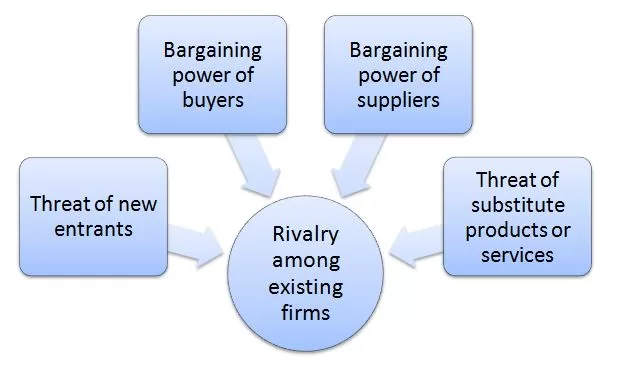
Porter’s Five Forces analytical framework developed by Michael Porter (1979)[1] consists of five individual forces that shape an overall extent of competition in the industry. Nvidia Porters Five Forces are illustrated in figure below: Porter’s Five Forces Threat of new entrants in Nvidia Porter’s Five Forces Analysis Threat of new entrants into graphics processing unit (GPU) industry is low. The below are the main factors that determine the level of threat of new entrants: 1. Time of entry. GPUs are highly saturated market with dominant market players already in the business for decades. Moreover, customer loyalty towards dominant players such as Advanced Micro Devices (AMD, Intel Corporation, Qualcomm Inc., Broadcom Inc. and Arm Holdings (a subsidiary of Softbank Group) is high this fact crates entry barrier for potential market entrants. 2. Massive investments. GPU producing requires massive capital requirements of millions of dollars. It will be very challenging for potential market entrance to secure funding for producing GPUs unless they offer unique competitive advantages with the potential to disrupt the market. 3. Specialist knowledge. GPUs are highly advanced technological products. The production requires highly specialist knowledge and technological know-how. New market entrants will face substantial difficulties in terms of finding employees with specialist knowledge who will agree to join a new company in a highly saturated market. Bargaining power of buyers in Nvidia Porter’s Five Forces Analysis The bargaining power of buyers for Nvidia products is generally insubstantial. The following considerations need to be taken into account in this regard: 1. Switching costs. Nvidia’s products are often integrated into larger systems and it is often difficult to replace these products with similar products produced by competitors due to massive costs and expertise knowledge involved. Such a situation limits buyer bargaining power with positive implications for Nvidia. 2.…
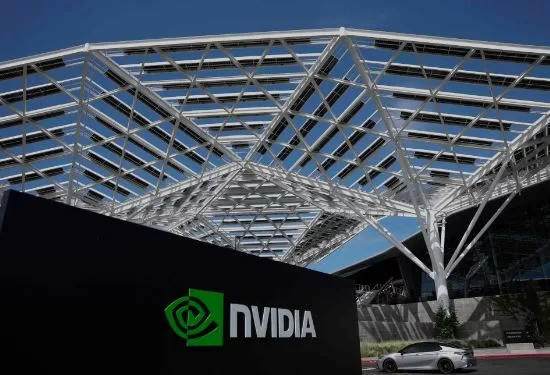
Nvidia segmentation, targeting, and positioning (STP) is a strategic approach to marketing that involves dividing the market into smaller groups of consumers (segmentation), selecting one or more of these groups to target with a specific marketing mix (targeting), and then positioning the product or service in the minds of consumers in a way that differentiates it from the competition (positioning). Nvidia uses the following types of product positioning. – Anticipatory positioning. Anticipatory product positioning is a strategy in which a company positions its products or services in a way that anticipates future trends or needs in the market. Nvidia has used this strategy effectively by positioning its products in a way that anticipates the increasing demand for high-performance computing solutions and emerging technologies such as artificial intelligence and autonomous vehicles. For example, Nvidia recognized in early 1990s the potential of AI and positioned its products accordingly, investing heavily in research and development to create GPUs that are specifically designed to accelerate AI workloads. As a result, Nvidia has become a key player in the AI market, with its GPUs powering many of the most advanced AI applications in industries such as healthcare, finance, and automotive. – Quality product positioning. Quality product positioning is a strategy in which a company positions its products or services as high-quality, reliable, and superior to those of its competitors. Nvidia has used this strategy effectively by emphasizing the quality and reliability of its products and by investing in research and development to continually improve its offerings. Accordingly the company creates high-performance GPUs for a wide range of applications, from gaming to data centre workloads. The following table illustrates Nvidia segmentation, targeting and positioning: Type of segmentation Segmentation criteria Nvidia target customer segment Geographic Region Taiwan, China, United States, other countries Density Urban…
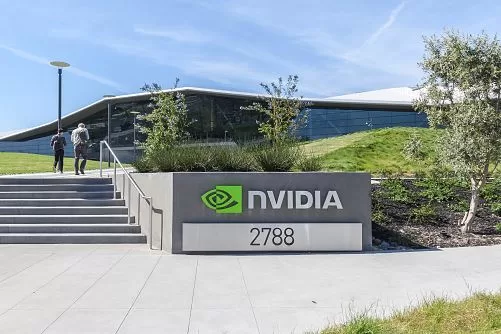
Nvidia marketing mix (Nvidia 7Ps of marketing) comprises elements of the marketing mix that consists of product, place, price, promotion, process, people and physical evidence. Product Element in Nvidia Marketing Mix (Nvidia 7Ps of Marketing) Nvidia develops and sells graphics processing units (GPUs) and related software for a wide range of applications. Nvidia products are used for gaming, professional visualization, data centre and cloud computing, artificial intelligence, autonomous vehicles, and other high-performance computing applications. Moreover, the multinational technology company also sells system-on-a-chip (SoC) products for mobile devices, development kits, and software development tools for AI and GPU computing. Place Element in Nvidia Marketing Mix (Nvidia 7Ps of Marketing) The company uses a number of sales channels in an integrated manner to deliver its products to the end user. These include the following: – Direct Sales. The software and fables company offers its products through its online store at www.store.invidia.com. Also the company has some physical retail stores called “Nvidia GeForce Experience Stores” located in major cities worldwide such as Los Angeles, London, Munich, Stockholm and Sydney. – OEM Partnerships. Nvidia partners with original equipment manufacturers (OEMs) to sell its products as part of their systems. Their main OEM partners are major computer manufacturers such as Dell, HP, and Lenovo. – Distribution Partnerships. The company also relies on distributors to sell its products to retailers and system integrators. For example, Micro, Synnex, and Tech Data are major distributors for Nvidia. –E-tailers. Major e-tailers, such as Amazon, Newegg, and Best Buy also sell Nvidia products to end users. – System Integrators. These are the companies that build custom systems for customers, incorporating Nvidia’s products as part of the solution. – Cloud Service Providers. Cloud service providers such as Amazon Web Services, Microsoft Azure, and Google Cloud offer GPU-accelerated computing…

Nvidia marketing strategy is based on the following principles: – Focusing on unique selling proposition. Nvidia produces highest quality graphics processing units (GPUs) and related software, as well as, system-on-a-chip (SoC) products for various platforms. Nvidia unique selling proposition is associated with the superior performance of its products and the company communicates this value proposition to the target customer segment through various marketing communication channels. – Usage of channel marketing. The multinational technology company has strategic collaboration in place with its channel partners such as system integrators and OEMs. This collaboration is important to pass the marketing message about advanced product features and capabilities to end-users. – Content marketing. Marketing strategy of Nvidia makes a great use of content marketing. Specifically, the company educates their potential customers about advanced features and capabilities of their products through YouTube videos, blog articles, whitepapers, and case studies. Nvidia marketing strategy can be also explained through the application of Brand Essence Wheel Model. Nvidia brand essence is the core and overall image of the company and it has the following important elements: – Attributes are verifiable facts about the company. Nvidia is one of the largest GPU producers in the world. The US-based company has been in the business for more than 30 years. – Benefits relate to the tangible points of differentiation. Nvidia customers benefit from attractively designed GPUs and other related products that offer highly advanced features and capabilities. Brand Essence Wheel – Consumer values are elements that company celebrates and promotes. For the US-based the multinational technology company it includes innovation, effectiveness, diversity and inclusion. – Personality refers to a set of human characteristics that can be applied to brands. Nvidia brand personality is associated with being dynamic and sophisticated. Nvidia Corporation Report contains the above analysis of Nvidia…

PESTEL is a strategic analytical tool and the acronym stands for political, economic, social, technological, environmental and legal factors. Nvidia PESTEL analysis involves the analysis of potential impact of these external factors on the bottom line and long-term growth prospects of the multinational technology company. Political Factors in Nvidia PESTEL Analysis There is a host of political factors that can affect Nvidia. These include geopolitical tensions, government incentives and regulations, corruption, freedom of press, trade union activities and others. Moreover, the extent of bureaucracy, government tariffs and trade controls, as well as, tax policies can also have implications on the performance of the multinational technology company. Government intervention Nvidia had to experience the effect of an external political factor of government intervention into its growth plan. The company had to abandon the acquisition plan of chip technology company ARM for USD 40 billion from Soft Bank after an investigation from UK’s Competition & Markets Authority and the US Federal Trade Commission sued to block the proposed merger due to the concerns that combined firm to stifle competing next-generation technologies.[1]. The multinational technology company is not immune from such interferences in the future as well. US-China Tech War Nvidia had to bear the collateral damage due to US-China tech war during the past few years. The world’s most valuable semiconductor company has been blocked from selling its most advanced chips — the H100 and A100 series — to Chinese customers since August when the US imposed export controls on technology used for AI. Nvidia has been forced to reconfigure some of its chips to comply with US rules limiting the performance of products sold in China. It is not the first instance where Nvidia and other major technology companies have been affected by so called tech war between…
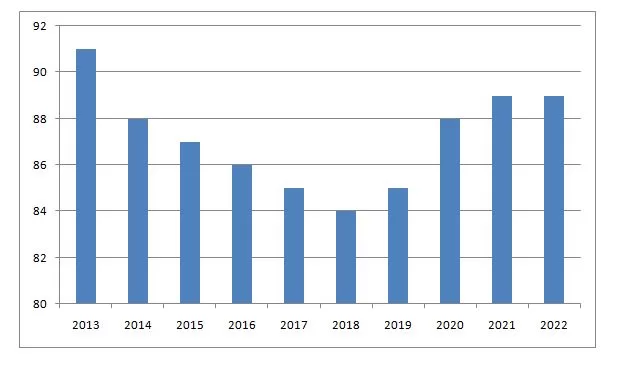
SWOT is an acronym for strengths, weaknesses, opportunities and threats related to organizations. The following table illustrates Nvidia SWOT analysis: Strengths 1. Global leadership in GPU market 2. Unique position to benefit from increasing popularity of AI 3. More than 370 partnerships revolving around self-driving cars 4. Advanced R&D capabilities Weaknesses 1. Dependency of the majority of profits on graphics cards alone 2. Dependence on 3rd parties due to fabless manufacturing 3. High operational costs 4. Limited product differentiation. Opportunities 1. Benefiting from increasing popularity of AI 2. Acquisitions of other technology companies 3. Expansion into new industries 4. Growth in the cloud computing market Threats 1. Intensifying competition 2. Supply chain disruptions 3. Regulatory changes 4. Disruptive innovation Nvidia SWOT analysis Strengths in Nvidia SWOT Analysis 1. Nvidia is the global leader in GPU market with market share of more than 70%. The company has benefited from the first mover advantage. Nvidia’s GeForce 256 is widely considered the world’s first GPU. Furthermore, at the moment Nvidia GeForce RTX 3090 TI is considered as the best-performing GPU in the world.[1] The global market leadership is a considerable strength for the multinational technology company in terms of brand image and revenue potential. 2. Nvidia produces advanced chips required to train and run artificial intelligence (AI) networks and as such the company hugely benefiting from the increasing integration of AI into various aspects of personal and professional lives for millions of people. Other competitors such as AMD, Cisco and Juniper also set to benefit from AI, however, Nvidia in particular had made earlier bet and the company currently has become synonym with AI. Furthermore, on May 30, 2023 Nvidia market capitalization crossed USD 1 trillion threshold for the 1st time after its artificial intelligence prospects vaulted the chipmaker into an elite club…
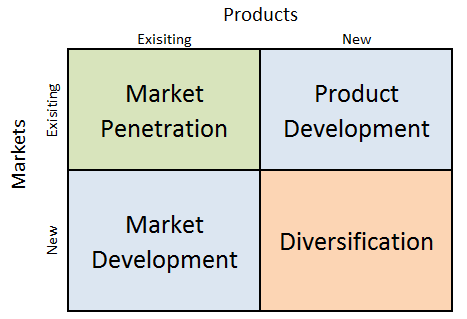
Nvidia Ansoff Matrix is a marketing planning model that helps the GPU producer to determine its product and market strategy. According to Ansoff Matrix there are four different strategy options available for businesses. These are market penetration, product development, market development and diversification. Ansoff Growth Matrix Within the scope of Ansoff Matrix, Nvidia uses all four growth strategies in an integrated manner: 1. Market penetration. Market penetration refers to selling existing products to existing markets. The multinational technology company operates in 32 countries directly and sells its products in many other countries through distributors and re-sellers[1]. Popular market penetration strategies used by Nvidia include print and media advertising, sales promotions, marketing events and experiences, as well as, public relations practices. 2. Product development. This strategy involves developing new products to sell to existing markets. Product development strategy is one of the key growth strategies for Nvidia. In 2021 alone, the company spent over USD 3 billion on R&D, which represented over 20% of its total revenue. Nvidia has invested over USD 29 billion in research and development since its inception.[2] 3. Market development. Market development strategy is associated with finding new markets for existing products and Nvidia uses this strategy to grow the business. Starting only with the US market, the multinational technology company currently operates in 32 countries directly. The company sells its products to many other countries through distributors and re-sellers. 4. Diversification. Diversification involves developing new products to sell to new markets and this is considered to be the riskiest strategy. Nvidia uses diversification extensively, systematically entering new business segments. Starting as 3D graphics producer in 1993, the company expanded product portfolio to produce GPUs in 1999 and immersed itself into AI segment starting from 2012. More recently, Nvidia has further diversified the business to enter cloud…

Nvidia organizational culture integrates the following key elements. 1. Innovation. Nvidia is one of the most innovative companies in the world and its organizational culture promotes the spirit of creativity for innovation among employees at all levels. The company encourages employees to think outside the box and come up with new and creative solutions to problems. Consistently producing innovative products and services is a business strategy for NVIDIA and therefore, the company systematically attempts to integrate innovation into the DNA of its organizational culture. 2. Intellectual honesty. The co-founder and long-term CEO Jensen Huang has served as a role model in integrating intellectual honesty within Nvidia organizational culture. For Huang intellectual honesty is critically important to admit mistakes and failures and tolerating them to foster creativity and innovation. Jensen Huang came to appreciate the value of intellectual honesty early on in his career as a head of Nvidia. The first ever product produced by Nvidia simply did not work costing huge amount of investments. It was at that time Huang acknowledged the failure and started everything from the beginning. 3. High-performance. Organizational culture of Nvidia promotes high performance among employees through creating relaxed environment for employees to work. The absence of office politics and hierarchy motivates employees to perform at their best. 4. Inclusion and diversity. CEO Jensen Huang has placed inclusion and diversity at the core of Nvidia organizational culture. Diverse employees at NVIDIA score the company 78/100 across various culture categories, placing NVIDIA in the top 10% of companies on Comparably with 10,000+ Employees for Comparably’s diversity score[1]. Nvidia Corporation Report contains the above analysis of Nvidia organizational culture. The report illustrates the application of the major analytical strategic frameworks in business studies such as SWOT, PESTEL, Porter’s Five Forces, Value Chain analysis, Ansoff Matrix and…
